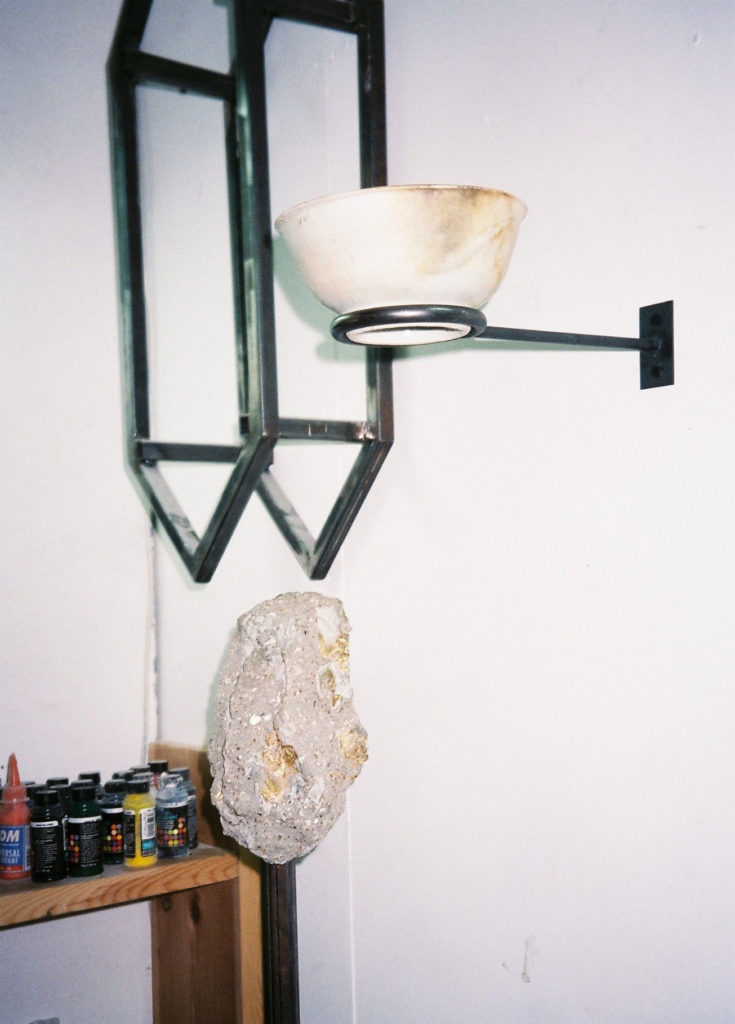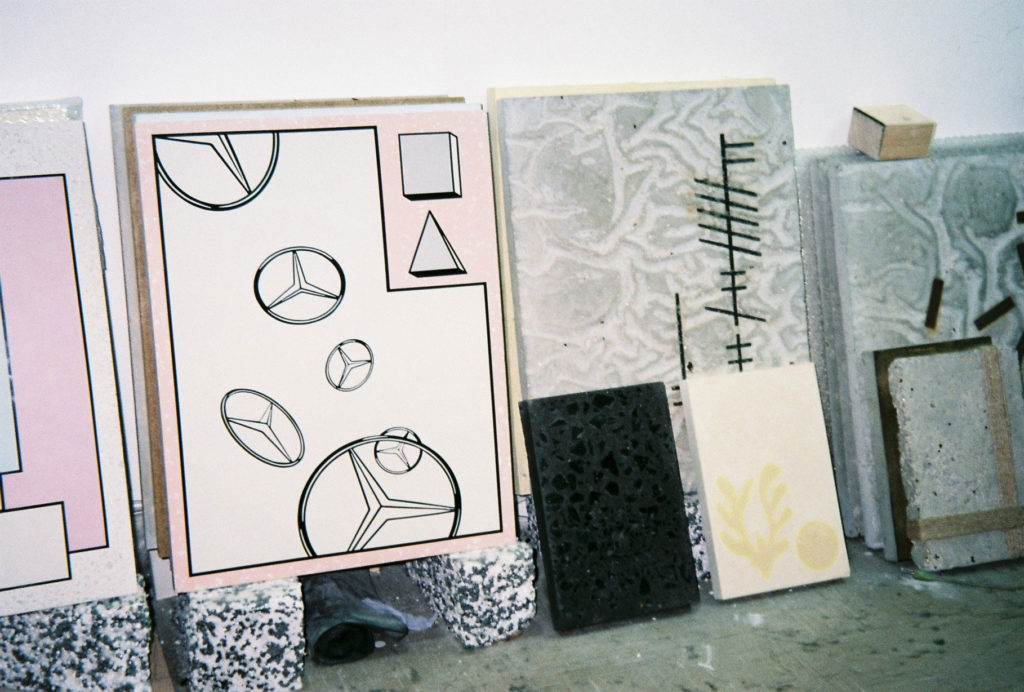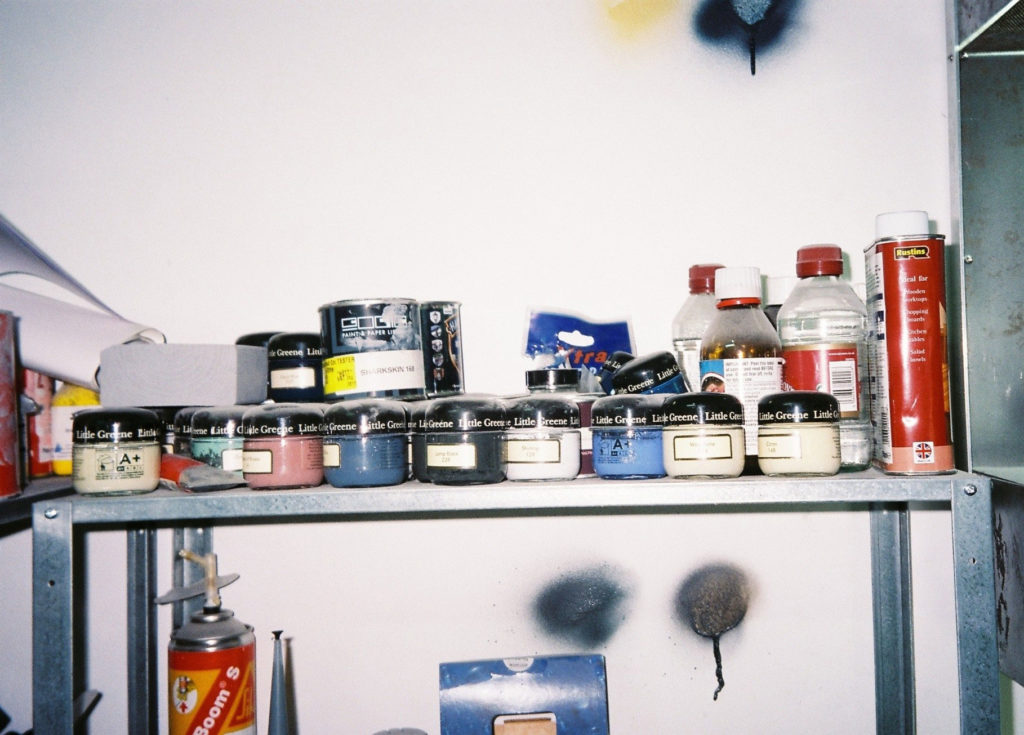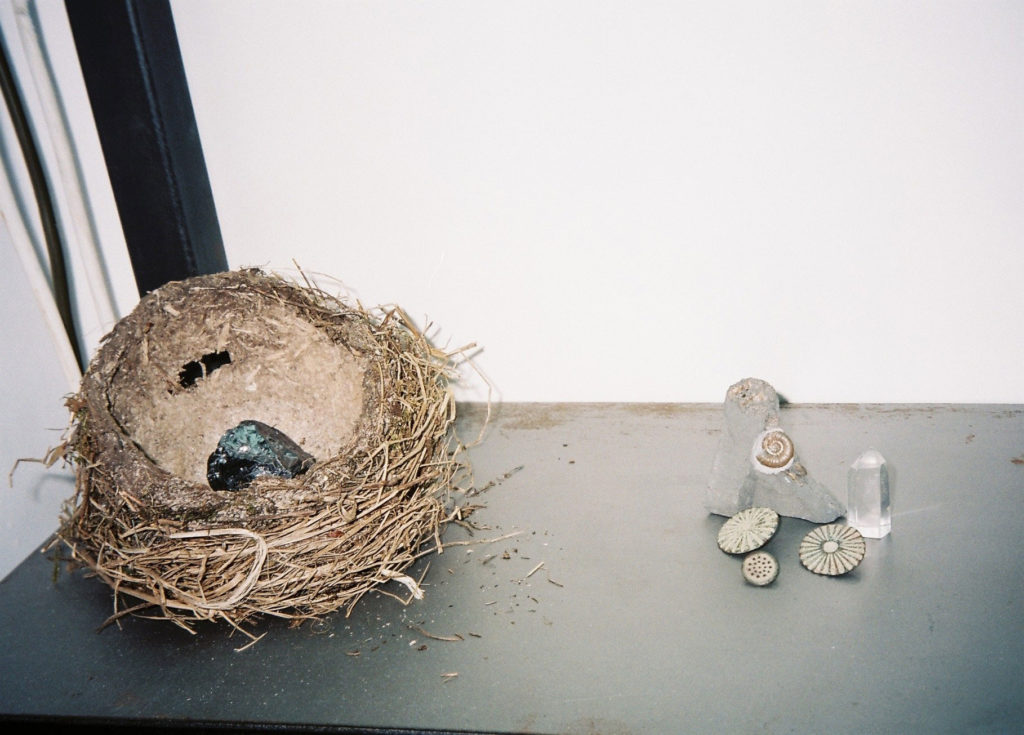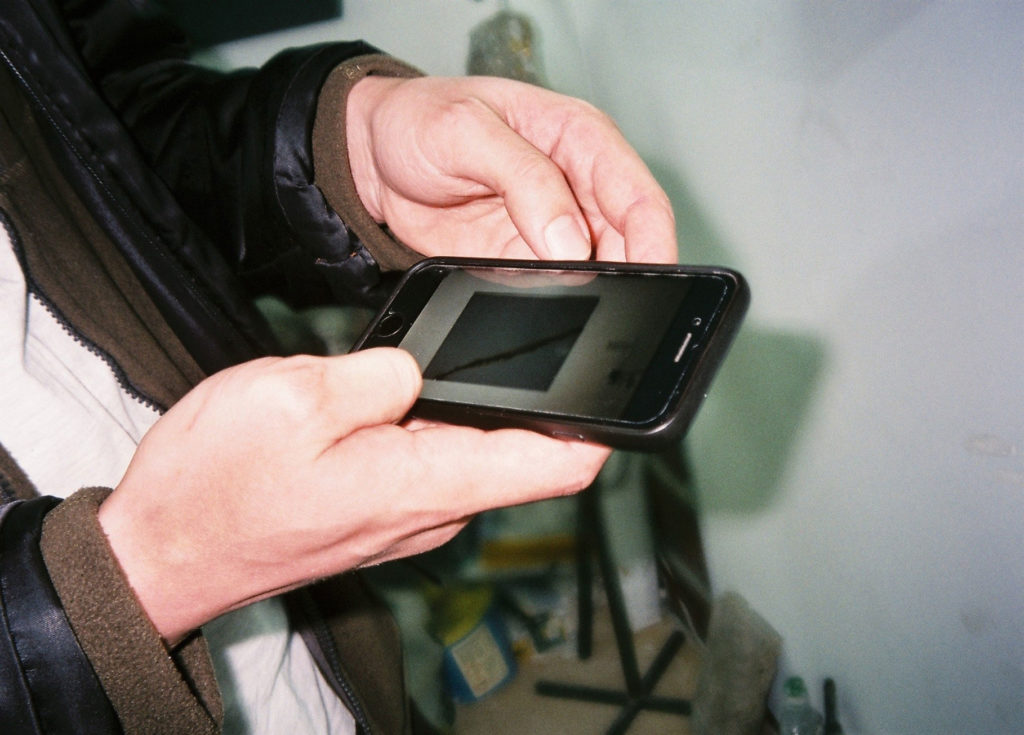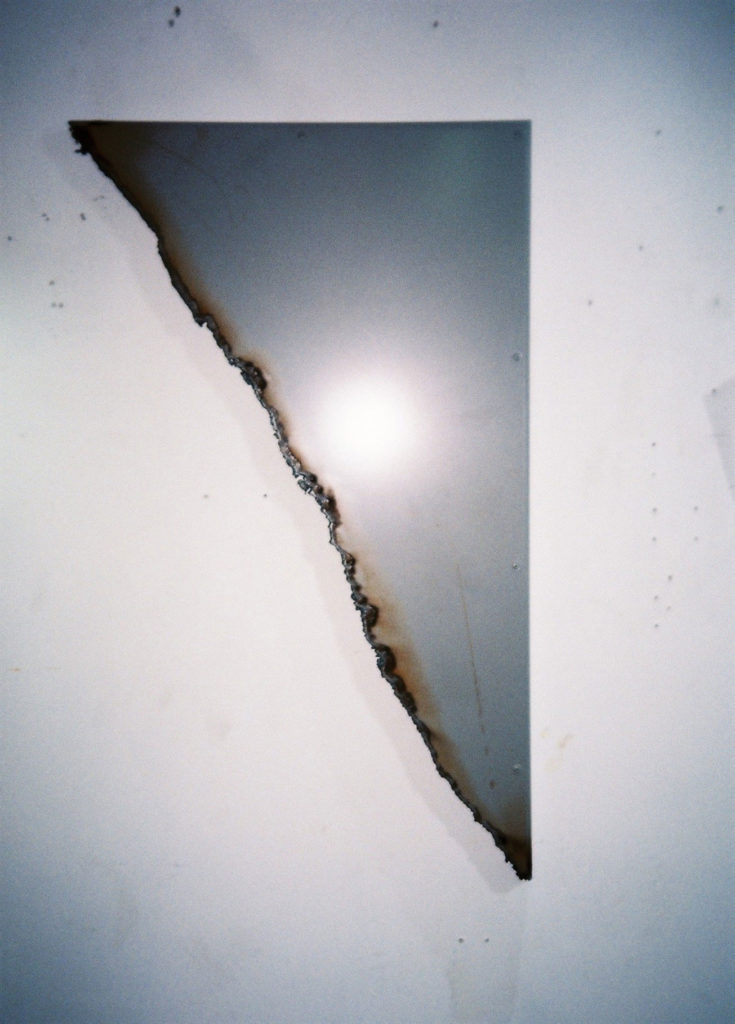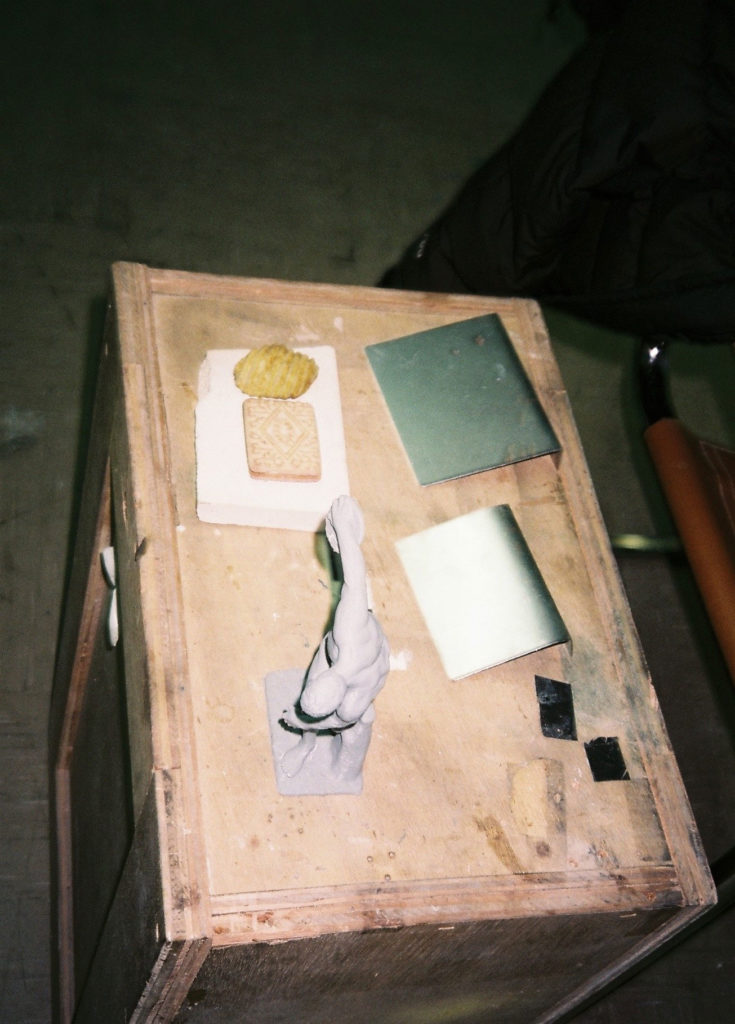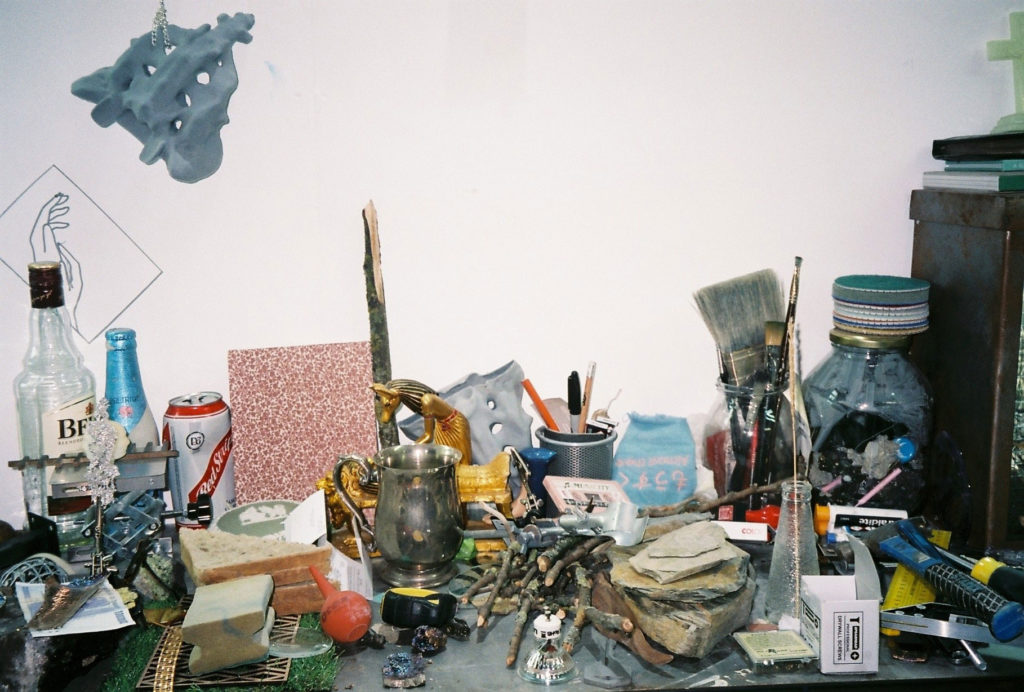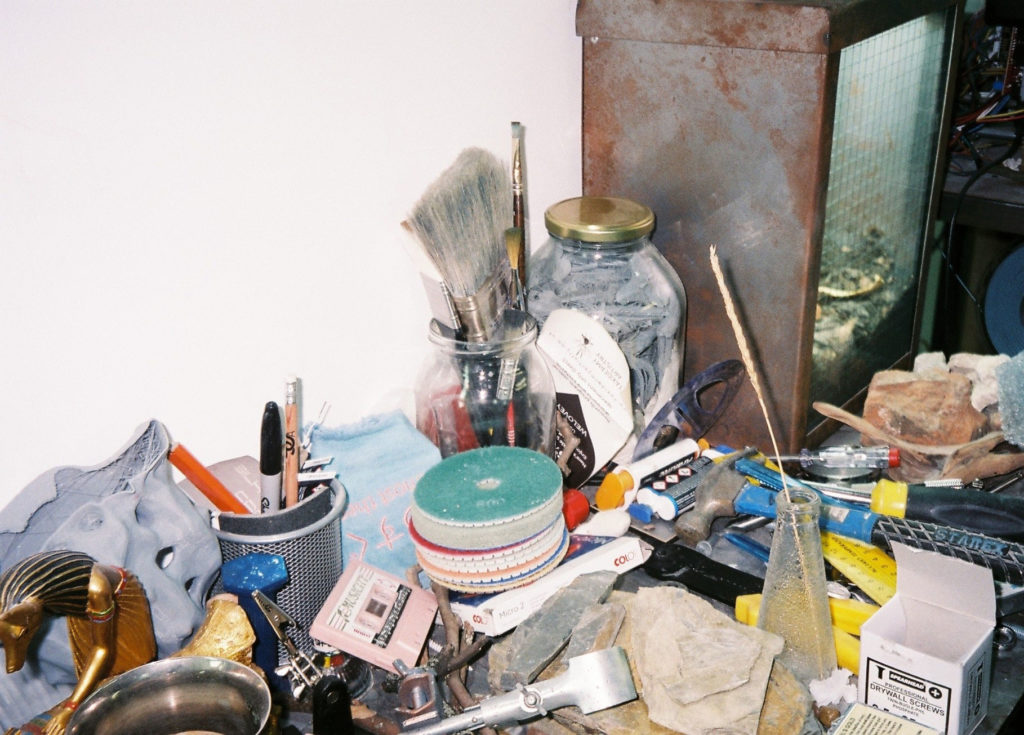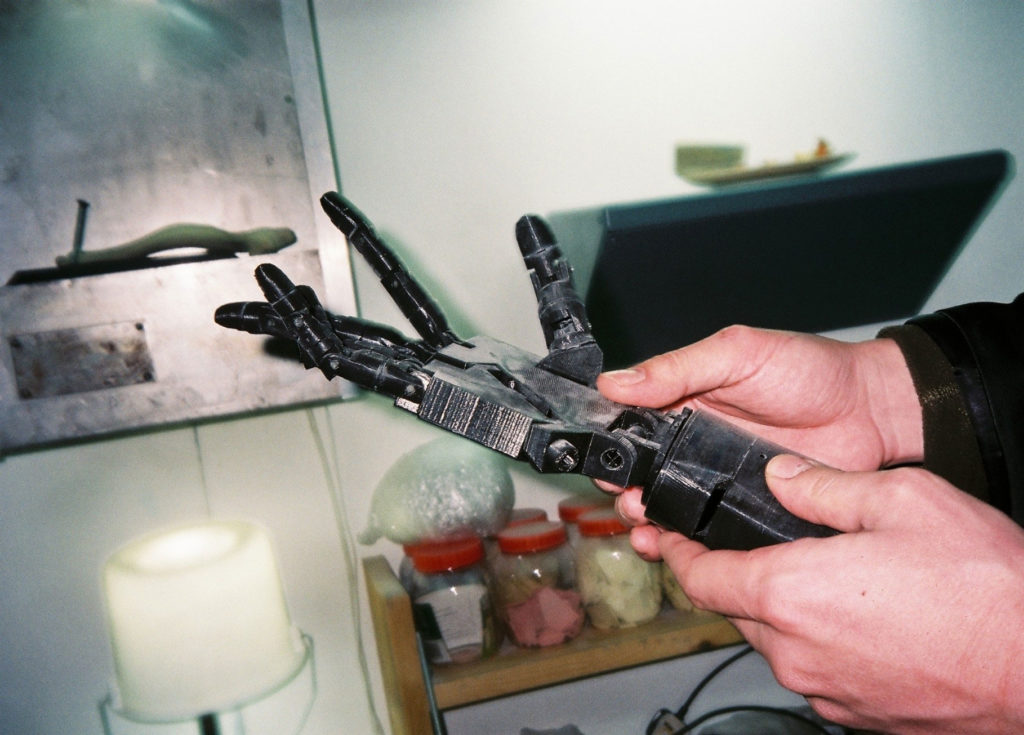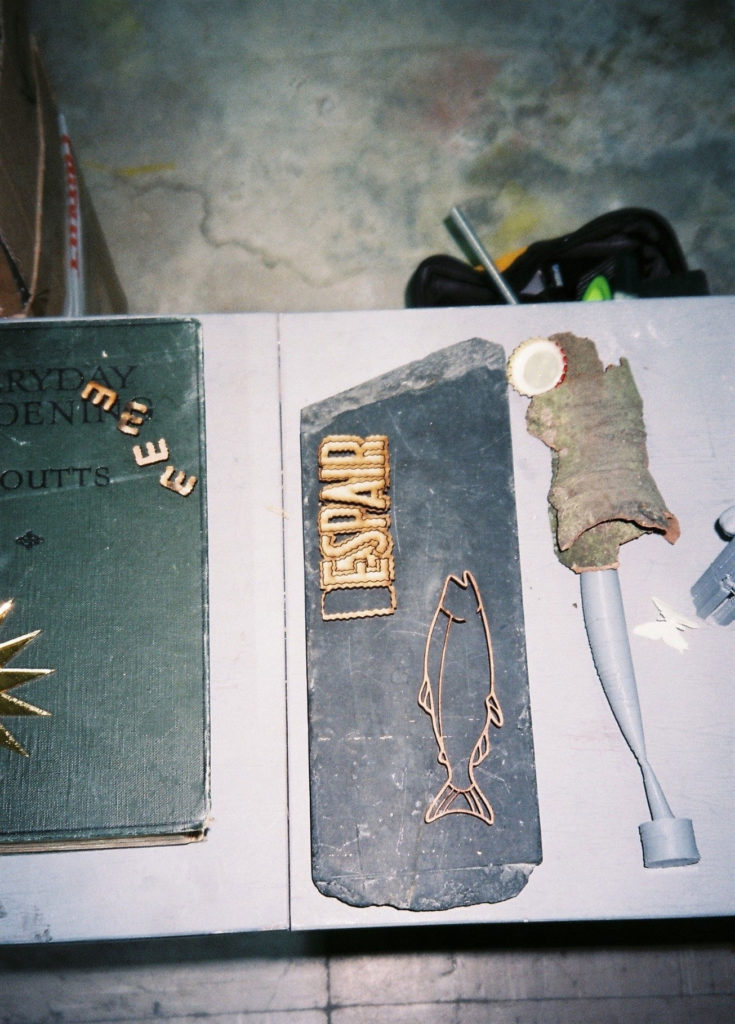




















































Mutating objects and spaces in the house of wonders.
In Camberwell, South London, there is an archive of bizarre artefacts hidden in the studio of artist Victor Seaward. As we walk into this house of curiosities, we stumble upon antiquities, dissected coleopterous, and 3D printed toilet paper rolls, which are disquietingly displayed in illuminated vitrines. Every morning, Victor turns on the lights of the room and the individual shelving displays, where his final pieces are installed. Only then the space becomes activated. These physical containers for the artist’s thoughts take many forms and directions: a bowl with a magic 8 ball sticks out from the wall, a 3D-printed phantasmagoric hand rests on top of a blue pillar, and lights hang from pipelines through universal holder clamps. Nothing is stacked inside boxes, but rather exhibited, facilitating contemplation, which is a big part of the artist’s thinking process. Ongoing experiments are everywhere to be found: leaves, shining stones, and even ancient sculptures. While some material production occurs elsewhere, it is the phenomena of the assemblage of the parts -or the ingredients- that takes place in the studio. A Makita drill and a 1m aluminium ruler are the most frequent tools that allow the artist to transform mundane objects into artworks. Additionally, this environment metamorphoses itself from laboratory to museum, helping the contextualisation of the final pieces. Being at once a place for process and display, this curated chaos behaves as both the object and the space, becoming a ‘Wunderkammer’.




